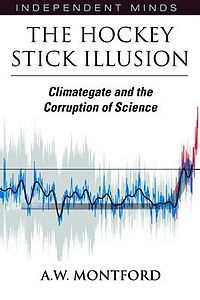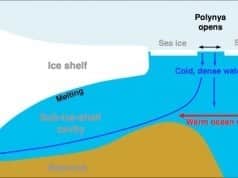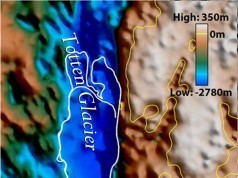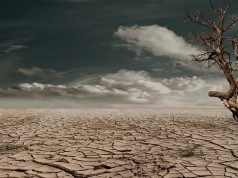Andrew Montford’s The Hockey Stick Illusion is a rolicking good read. This book doesn’t examine the merits of competing climate change perspectives. Rather, it tells the story of a handful of scholarly papers, the group of people who produced those papers, and another group of people who’ve utterly discredited them.
In the process we learn that some of the world’s most famous science journals don’t enforce their own policies. We learn that the scientific method appears to be an old-fashioned, entirely passé concept to a younger academic generation that nevertheless demands the prestige and respect accorded to genuine scientists. We learn that the scientific establishment has failed repeatedly to demonstrate moral leadership in the face of improper behaviour.
Along the way, we also learn some disturbing things about the Intergovernmental Panel on Climate Change (IPCC). In 2001, those in charge chose to make the hockey stick graph a central icon of the IPCC’s latest report even though the graph’s findings completely overturned established scientific thought (including the view expressed by the previous IPCC report published six years earlier).
The hockey stick paper’s lead author wasn’t a scholar with decades of experience whose methods had been thoroughly reviewed, discussed, and generally confirmed by the scientific community. Rather, Michael E. Mann was young. He received his PhD in 1998 – the same year the first hockey stick paper was published.
Well before the scientific community had had an opportunity to digest that paper (which implied that the Earth’s surface temperature was rising dramatically), Mann was appointed lead author for an IPCC chapter that subsequently cited 10 papers he’d personally authored or co-authored in order to make its case. As Montford writes:
we can only stand back in admiration that someone who had published his PhD a matter of a year or so earlier could be invited to head the team writing one of the most critical chapters in one of the most important scientific reports written for decades.in that position he had a clear conflict of interest in assessing the published literature – he was going to be considering his own work.
Nor did the IPCC stop there. It also invited Mann to be a contributing author for two other chapters. While still in his early 30s, therefore, the IPCC considered Mann one of the world’s top scientific experts in three separate areas:
- observed climate variability and change
- physical climate processes and feedbacks
- and climate model evaluation
So thoroughly unconcerned was the IPCC regarding Mann’s lack of experience, so enamored was it of his hockey stick graph, that when the IPCC’s chairman released the results of the 2001 climate bible to the world’s media, an enlarged version of the graph was displayed behind him.
And that is only the beginning of Montford’s IPCC story. His book describes how, when the next version of the IPCC report was being written, a senior bureaucrat threatened to revoke the reviewer status of Steve McIntryre (one of the hockey stick’s critics).
The text of the chapter McIntyre was spending his own, unpaid time reviewing for the IPCC referred to two unpublished papers. In itself, this should ring alarm bells. Since neither paper had yet been shared with the larger scientific community, it was surely premature to consider them solid pieces of evidence.
McIntrye asked to see the datasets on which the unpublished papers relied, but the first IPCC official he contacted refused to get involved. McIntyre then wrote directly to the lead authors of the two papers – Gabriele Hegerl and Rosanne D’Arrigo. He also appealed to a more senior IPCC official, Susan Solomon, for assistance. Montford explains:
For her part, Hegerl refused to release any data until after her paper was published and, while D’Arrigo declined to correspond with McIntrye directly, one of her co-authors referred him to.the Journal of Geophysical Research.which was to publish her paper.[This journal] had clear data policies, which stated unequivocally that all datasets used must be archived in a public database.
Not only was McIntyre denied this data, Solomon responded by accusing him of behaving improperly as a reviewer and of trying to influence the editorial decisions of the Geophysical Research journal – to which he’d written in an attempt to gain access to D’Arrigo’s data. (It is perhaps worth mentioning here that D’Arrigo has co-authored papers with Michael Mann.) Astonishingly, Solomon ended her letter to McIntyre by threatening to ban him as an IPCC reviewer if he didn’t cease his data pursuit.
In a sane world there is no way the IPCC would rely on yet-unpublished scientific papers in a report that influences trillion-dollar decisions. In a sane world, the fact that these two authors had declined to share their data should have automatically disqualified their papers from IPCC consideration.
In a sane world, the IPCC should have been mortified to learn that Hegerl was refusing to share her data since she was, in fact, serving as a coordinating lead author (the most senior level of IPCC author) for that very edition of the climate bible. In a sane world, Solomon would have demonstrated that the IPCC’s frequent claims of transparency and scientific integrity are more than empty words.
But as those who read Montford’s excellent book will discover for themselves, this isn’t a sane world. It’s climate science.
P.S.
Gabriele Hegerl, a climate modeler, played a number of roles with regard to the 2007 IPCC report. She is apparently an expert in both the past and the future of climate change, in addition to being an attribution virtuoso.
- contributing author, Working Group 1, Chapter 1 (Historical overview of climate change science)
- coordinating lead author, Working Group 1, Chapter 9 (Understanding and attributing climate change)
- contributing author, Working Group 1, Chapter 10 (Global climate projections)
- lead author, Working Group 1, Technical Summary
- drafting author, Working Group1, Summary for Policymakers
The chapter in which she filled the most senior role (#2 on the list above) cited 14 pieces of her own research. In other words, like Michael Mann, Hegerl was in a direct conflict-of-interest. Charged with producing an even-handed, unbiased review of the total range of the scientific literature, she was placed in a position where she could decide that her own research was reliable and that the work of rival researchers wasn’t worth the IPCC’s mentioning. The IPCC has never explained why we should trust its findings in light of these egregious conflicts.






